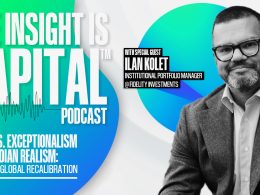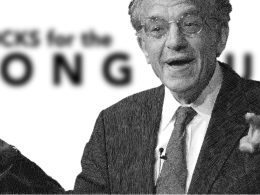by Kara Ng, Russell Investments
On the latest edition of Market Week in Review, Senior Quantitative Investment Strategy Analyst Dr. Kara Ng and Sam Templeton, manager, global communications, discussed the latest developments surrounding Brexit, the release of minutes from the U.S. Federal Reserve (the Fed)’s September meeting and potential ramifications to U.S. equity markets of continued interest-rate hikes.
Progress hard to come by for May, EU in Brexit talks
An EU summit in Brussels the week of Oct. 15 was billed as the moment of truth for Brexit negotiations, Ng said, as the clock is rapidly ticking on EU and UK leaders to strike a deal before the UK’s scheduled exit from the EU in March 2019. “The closer we get to the end of the year without much progress at the negotiating table, the more likely a no-deal Brexit becomes,” Ng explained. UK Prime Minister Theresa May found herself in a tough spot at the summit, she added, with members of her own party starting to turn against her. “This led May to attempt to walk a line between being unyielding enough to retain the support of her party, and yielding enough to be able to make a deal with the EU,” Ng remarked.
So, what came out of the meeting? Ultimately, little overall progress, Ng said. With just one more summit left in December (and possibly an emergency meeting in November), Ng and the team of Russell Investments strategists believe that markets will be susceptible to heightened volatility, as speculation mounts over whether or not a deal can be reached. “All things considered, we still think that a no-deal Brexit is a low-probability outcome,” she said, “because in the end, both sides have incentives to reach an agreement.”
Is Fed policy about to turn restrictive?
Shifting to the U.S., Ng said that recently released minutes from the Federal Open Market Committee (FOMC)’s Sept. 25-26 meeting indicative a relatively hawkish tone from the central bank—although probably not as hawkish as earlier comments from Fed Chair Jerome Powell may have implied. “Earlier this month, Powell remarked in an interview that the Fed was a long way from reaching neutral interest rates—a fairly hawkish comment which we think may have just been a messaging slip-up,” she said.
The September minutes show that a majority of FOMC members believe that a more restrictive monetary policy may be needed in order to combat rising inflation and an overheating economy, Ng noted. “At Russell Investments, this comes as no surprise—we’ve been expecting the Fed to become restrictive in 2019, given that the U.S. is past full employment and inflation is around the Fed’s 2% target.” Because of this, the central bank, in Ng’s opinion, has justification to keep on raising interest rates at a quarterly pace.
Potential impacts of rising interest rates on U.S. markets
Assuming the Fed sticks to its pattern of quarterly interest-rate increases, what are the possible ramifications for U.S. equity markets? Not much in the short-term, Ng said, as she believes the recent stock market sell-off may have created a small buying opportunity for U.S. stocks. “Equities there are now a little less expensive, and investor sentiment is slightly less euphoric,” she explained.
The long-term impacts of continuous Fed rate increases may start causing fits for markets around late 2019 or early 2020, Ng said. “Under this scenario, short-term interest rates would continue to rise, leading to a likely inversion of the U.S. Treasury yield curve around 2019,” she explained. At the same time, the tailwinds from U.S. fiscal stimulus would also probably fade—leading to a likely moderation of the U.S. economy and a more vulnerable U.S. equity market as a result, Ng concluded.















